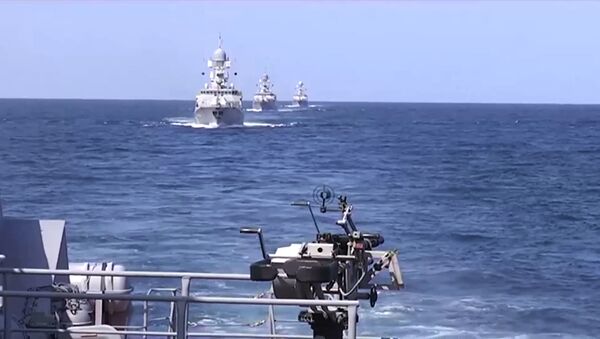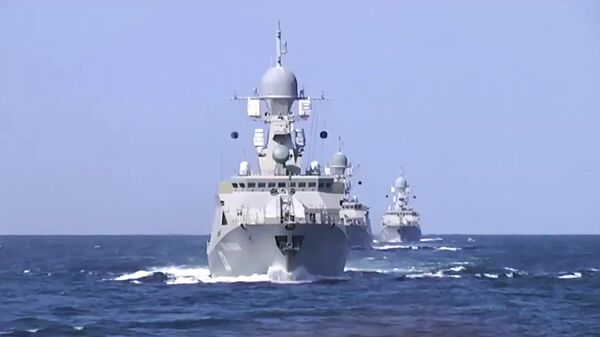With airstrikes in Syria, Russia has shown its full military capacity at a level that most US experts didn't expect.
Furthermore, after Russia launched cruise missiles at ISIL-targets in Syria from ships located on the Caspian Sea, it raised a few eyebrows in the West, as the US military will now have to figure out how to deal with the unprecedented way of firing missiles from a long range, Rodier explained.
"This naval firing capacity [of long-range missiles from ships] challenges the supposed idea of invulnerability of US Navy aircraft carriers. US military experts are now urged to review all of their naval plans to deal with this kind of new threat," Rodier told Atlantico.
This leads to the idea that Russia, technically speaking, can fire long-range cruise missiles from its ships anywhere in the world.
The launch of cruise missiles isn't that big of a deal by itself, but it's the combination of this type of guided rocket and small-size armed corvette warships that fired them makes military expert stand in awe. The fact that surprised many US experts was that Russia armed its Buyan-M class ships, which displace only 950 tons, with firepower comparable to much larger US Arleigh Burke-class destroyers and Ticonderoga-class missile cruisers.
By demonstrating its might, Russia had two goals in mind. The first one was to demonstrate what is known as distributed lethality warfare, the strategy that focuses on not giving the enemy one big target and instead spreading military technology and weaponry across many smaller units. This confuses the enemy, making it harder to track down and destroy numerous smaller units; meanwhile, the smaller units themselves are each capable of delivering a fatal blow.
On September 30, Russia launched a multinational aerial campaign aimed at assisting Damascus-led forces in their fight against terrorist groups, which are trying to oust President Bashar al-Assad. The operation was authorized by legitimate Syrian authorities.




